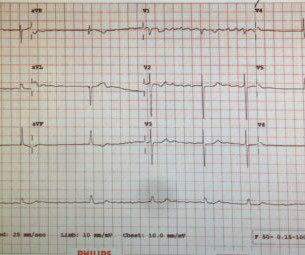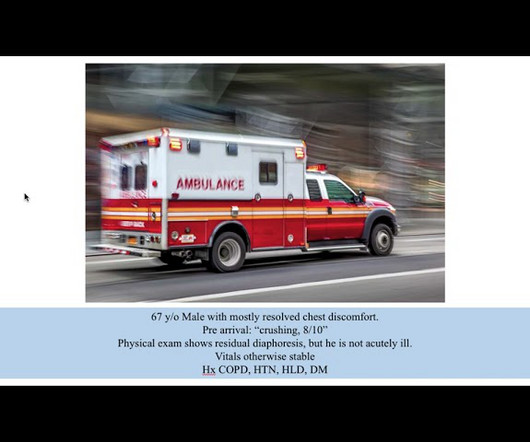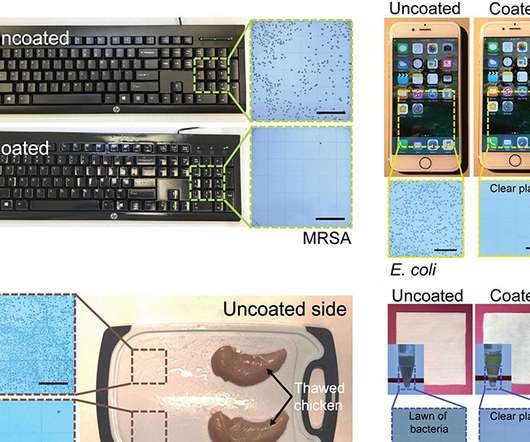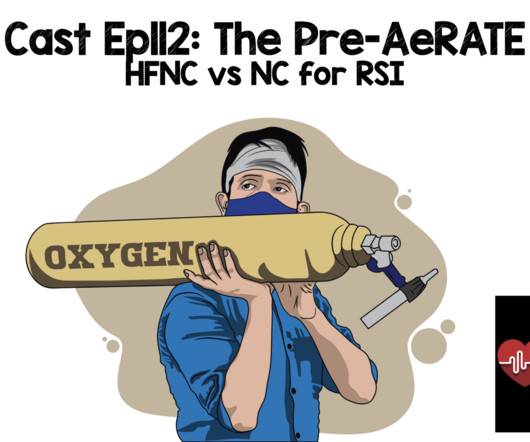ECG of the week 7th September 2022 – Answer
EMergucate
SEPTEMBER 7, 2022
A 85 year old female presents to ED. She has been complaining of nausea and lethargy over the past week. Her GP has recently started her on new medication for her heart.

EMergucate
SEPTEMBER 7, 2022
A 85 year old female presents to ED. She has been complaining of nausea and lethargy over the past week. Her GP has recently started her on new medication for her heart.

EMS 12-Lead
SEPTEMBER 6, 2022
Coronary thrombosis is a dynamic process of platelet aggregation and subsequent coagulation. During spontaneous reperfusion -- whether via thrombolysis, or recruitment of collateral circulation -- there exists characteristic ST/T changes on the ECG.
This site is protected by reCAPTCHA and the Google Privacy Policy and Terms of Service apply.

The Skeptics' Guide to EM
SEPTEMBER 4, 2022
Date: September 3rd, 2022 Reference: Milne WK, Carpenter CR and Young T. A Hero Is Rising – Season#8 Book Guest Skeptic: Dr. Tayler Young is a first year Family Medicine resident at Queen’s University. Her interests are quality improvement and Free Open Access to Medical Education (FOAMed). This is an SGEM Xtra to announce Season#8 has now been […] The post SGEM Xtra: A Hero Is Rising – Season#8 Book first appeared on The Skeptics Guide to Emergency Medicine.

Medgadget
SEPTEMBER 7, 2022
A team at the University of Michigan has developed a coating for frequently touched surfaces that can rapidly kill a wide array of pathogens, including MRSA and SARS-CoV-2. The technology incorporates polyurethane that contains crosslinked compounds from essential oils with wide-spectrum anti-microbial action. The researchers fine-tuned the crosslinking process so that the oils were available to kill microbes but not sufficiently free to evaporate rapidly.

EMergucate
SEPTEMBER 6, 2022
The following abdominal x-ray is from a 45-year-old with abdominal pain & vomiting. What can be seen?

EMS 12-Lead
SEPTEMBER 5, 2022
Accurate lead placement is invaluable, and makes a significant impact on appropriate care trajectory, or misdiagnosis with unnecessary utilization of resources. A common finding associated with V1 / V2 malposition is P wave inversion, and rSr’ QRS with T wave inversion -- potentially leading clinicians to suspect Brugada pattern, for example, when no such entity exists.

Critical Care Scenarios
SEPTEMBER 4, 2022
Ruminations on nursing post-nominals, understated wealth, and how it’s easiest to not show your power when you already plenty of it. Ruminations on nursing post-nominals, understated wealth, and how it’s easiest to not show your power when you already plenty of it.
Paramedicine Now brings together the best content for paramedicine professionals from the widest variety of thought leaders.

EMergucate
SEPTEMBER 6, 2022
A 85 year old female presents to ED. She has been complaining of nausea and lethargy over the past week. Her GP has recently started her on new medication for her heart.

REBEL EM
SEPTEMBER 8, 2022
Background: Hypoxemia is a commonly encountered adverse event during rapid sequence intubation (RSI) in the ED. Critically ill patients in the ED often have a lack of physiologic reserve, decreased cardiac output, increased shunting, and reduced pulmonary reserves. Therefore, a strategy that safely avoids desaturation and prolongs safe apnea times would be beneficial.

Medgadget
SEPTEMBER 7, 2022
Researchers at MIT have developed an AI system that can diagnose Parkinson’s disease and track its progression, simply by monitoring someone’s breathing patterns as they sleep. The device looks like an internet router and can be mounted on the wall in a bedroom. It emits radio waves and then a neural network analyzes the reflected waves to assess breathing patterns.

REBEL EM
SEPTEMBER 5, 2022
Background: Hypoxemia and hypoperfusion are important factors in outcomes after ROSC. While hypoxemia (SpO2 <90%) is clearly deleterious, it is unclear if hyperoxia is beneficial. Recent studies on patients requiring critical care have demonstrated that hyperoxia is harmful and instead we should be targeting normoxia (SpO2>93%). Similarly, while it is clear hypotension/hypoperfusion will result in worse outcomes, it is unknown whether we should be targeting higher blood pressures after
Let's personalize your content